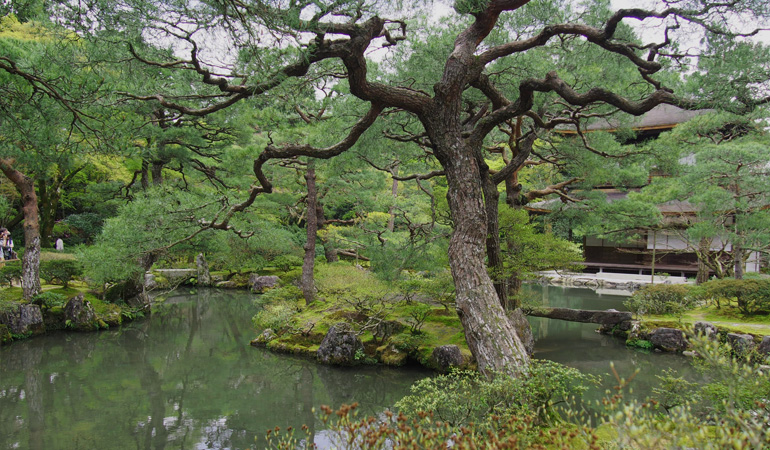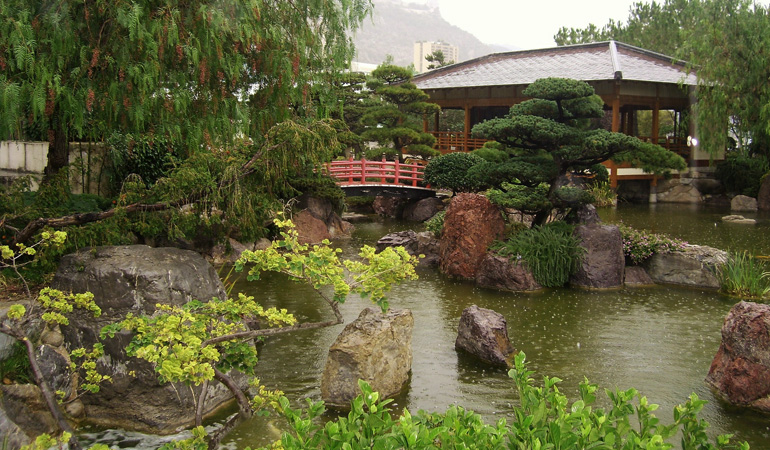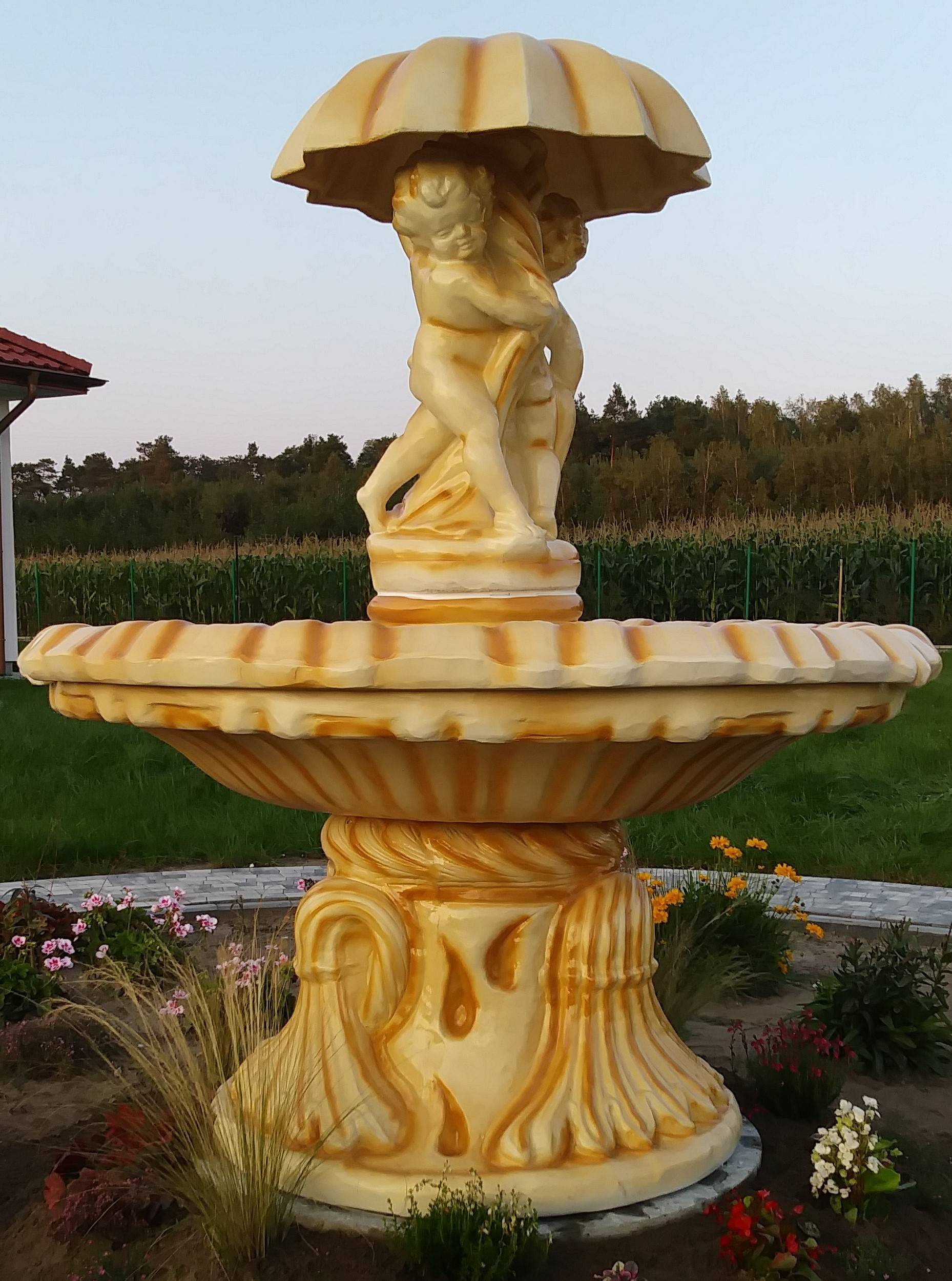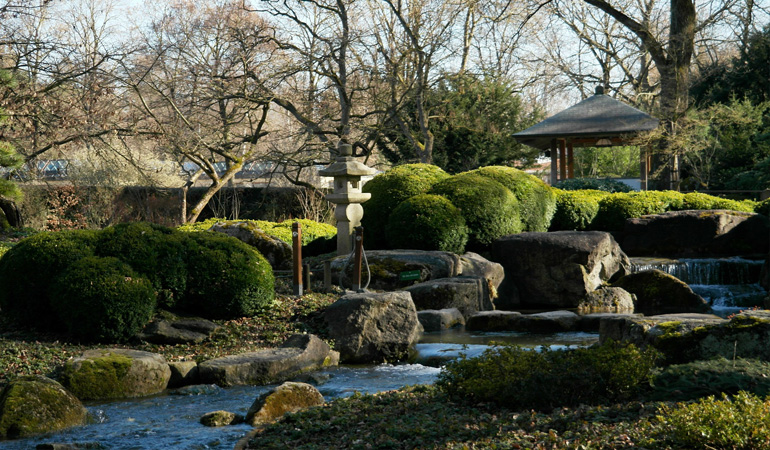
Japanese garden - sanctuary and natural asylum
Japanese garden designs recreate the symbolic landscape of Japan on a smaller scale: mountains, islands, rivers and gentle bays. The Japanese art of landscaping draws from religious nature worship. It has its roots both in Shintoism and the teachings of Buddhism that are imposed on it. Nature is treated as a way of divine, pure existence. A person's respect for the world comes from the conviction that it is subject to its laws.
The relationship of unity between man and nature is one of the most important distinguishing features of Japanese culture. He combines admiration for her loftiness and power with trust. Nature is not only the primary source of aesthetic experiences, but also a place of getting to know and experiencing oneself in the world.
The Japanese garden symbolically reflects it: its eternal balance, passing and at the same time duration and complementary opposites. It uses contrasting combinations: light and shade or stone and water. At the same time, it creates a separate, closed space, a kind of spiritual sanctuary, of which the Japanese house is a harmonious part.

Water in the Japanese garden
Both in the symbolism of the West and the East water symbolizes life: beginning, movement, health and passing. Running water is a sign of continuity and constant change. Stagnant water is a mirror, a sign of self-gaze, as well as purification and rebirth.
Water in a Japanese garden is one of the most important elements. It can take the form of a gurgling stream, fountains or pond. In larger gardens, it creates multi-level cascades, flowing down natural rocks, or specially prepared gutters made of stones and wood. On a smaller scale, it appears as a stone basin filled with water or a tiny stone fountain.
The flowing water brings movement and continuity to the Japanese garden. He also creates the natural music of this place - sounds conducive to relaxation and reflection.
Stone - rocky mountains and gentle islands
The opposite of water is stone, meaning immutability, durability and strength. A stone in a Japanese garden should be natural color, shape and texture. It can be used especially creatively where there are uneven terrain and natural hills. Rough boulders then naturally form the basis of the vertical, two-story garden layout. They imitate majestic rocky mountains.
In dry Japanese gardens, stone and water become one. They are based on gravel rivers, lakes and miniature seas. They are designed and stylized in such a way that their carefully ruffled surface creates the illusion of water surface, which wrinkles and moves under the influence of gusts of wind or sea waves. Massive boulders set on gravel lakes are islands with imaginary waves breaking.
Another use of stones in a Japanese garden is related to the composition of the surrounding vegetation. Mossy stones amid bursting greenery symbolize durability, a natural strength that resists even time.
Stone is also a material from which elements of small architecture and garden decorations are made: lanterns, pagodas, bowls. Aged, covered with damp or moss, they direct thoughts to the past and eternity. They are a reminder of what is permanent and important.

Asymmetry in architecture and vegetation
A characteristic feature of the Japanese garden is asymmetry and irregularity. This is another manifestation of a tribute to nature, which is asymmetrical and changeable in the Japanese landscape. After all, it is difficult to find repeating patterns in the line of hills and coastlines. The paths meander freely and the water reservoirs have irregular shores.
This effect is achieved by very careful shaping of the space: asymmetrical residential and garden buildings (gazebos, houses), assumptions rock - necessarily composed of an odd number of elements, and finally plants.

Plants in the Japanese garden
Asymmetry and irregularity are visible, among others in methods of planting and shaping of plants. You can form garden plants - e.g. pines small-flowered, Japanese or black pines, as well as potted plants - ficuses or miniature bonsai trees.
Japanese-style garden designers primarily use green plants: trees and shrubs of similar color - the mentioned pines, as well as boxwood and holly. The green mosaic is complemented by grasses and mosses. Green compositions composed of plants of various shapes and leaf textures are broken with the introduction of rare, colorful elements. These can be trees and shrubs that are covered with flowers in spring like cherries, azaleas or magnolias, or change the colors of the leaves to intense reds and browns like Japanese maple or heart hornbeam.

When you come home from work after a hard day, you are looking for respite, rest, a place to stop and calm your thoughts. A Japanese-style garden can perfectly transfer you from the splendor, fever and noise of the city to the world of nature and contemplation.
Contrary to appearances, establishing a Japanese garden in Poland does not have to be difficult - you can get all the necessary elements in our Cadekor store.
Shrubs and formed trees
Welcome!







 Copyright © 2024 cadekor.pl by
Copyright © 2024 cadekor.pl by 